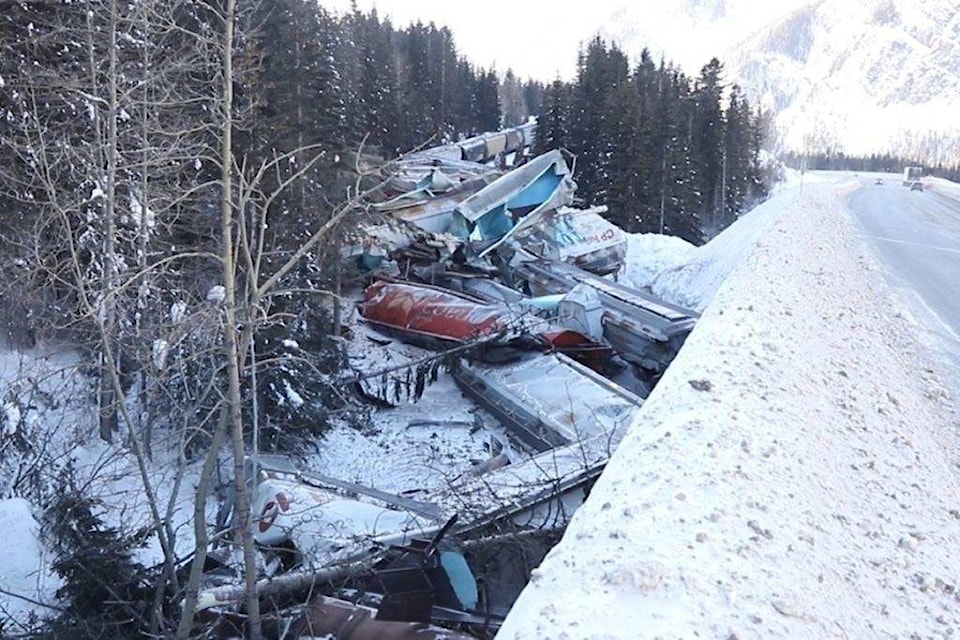We were fishing for sockeye salmon at place called Big Horn down past Spences Bridge last fall.
The river, ironically was named after explorer David Thompson by Simon Fraser—but Thompson had never seen the river.
Suddenly, with a screech of brakes – banging and clanging, a very long CP freight train across the river and heading toward Lytton pulled to a stop.
Slowly the train inched forward, until all three engines, and 122 cars cleared that spot.
Shortly after, two large repair rigs show up to grind, rip and repair a possibly split rail.
Last week’s derailment near Field of 66 cars carrying grain of a 112-car freight train with three locomotives caused the deaths of the train crew. This shows how vulnerable running trains in winter conditions can be.
Are the trains too long, with increased tonnage? Will there be more derailments? A month earlier, there was another wreck close to the Field incident.
Related: B.C. train that derailed and killed three ‘just started moving on its own’
Related: Column: Healthy hunting and our four-legged friends
Although there have been major upgrades to ballast and rails and bearings on wheels with the company, I’m sure some trains are a mile long, putting tremendous pressure on more than 13 bridges, including Stoney Creek, a steel arch structure widened in 1929, and the highest on the CP line, past the east boundary of Glacier National Park.
Tonnage on CP rails has increased seven per cent, with a proposal to upgrade/expand terminals on the Coast, meaning more rail traffic, including tanker cars moving Alberta crude to market.
Many times we see increased volume of trains passing through Salmon Arm with oil/bitumen as cargo.
Looking back a few years, I recall flagging down a CP freight near Taft. A bearing on a car loaded with sulphur was on fire. The heat detector at Kay Fall, (Enchanted Forest area) failed.
I have also witnessed a split rail on the 19 Mile overhead bridge one night while trying to apprehend salmon poachers; locomotive plunging off the rails at Mara crossing, rupturing fuel tanks – a highways sanding crew had left frozen sand on the rails, causing the locomotive to tip over across from the Mara Community Hall.
As for the Field derailment, very fortunately, it was the locomotive and grain cars, not oil tanker cars that entered the Kicking Horse River, a beautiful, rugged river that flows into the Columbia near Golden.
Despite the hullabaloo about a pipeline, just maybe it’s time we though about getting it done. After all we own it.
It’s safer in the ground than the environmental disaster to water, air and wildlife of not only the Kicking Horse River, but along the shores of our beautiful Shuswap lakes that many trains pass by.
@SalmonArm
barb.brouwer@saobserver.net
Like us on Facebook and follow us on Twitter
